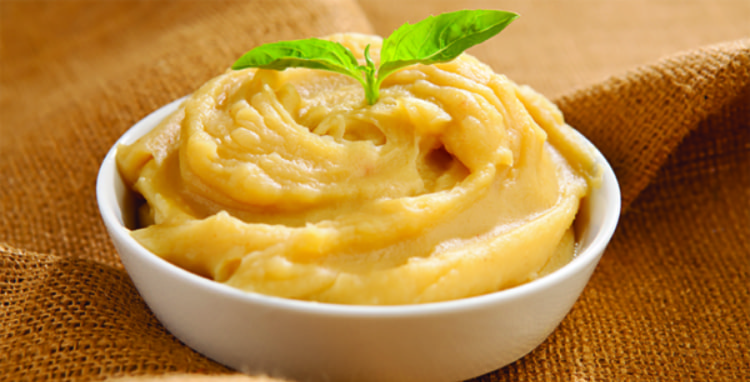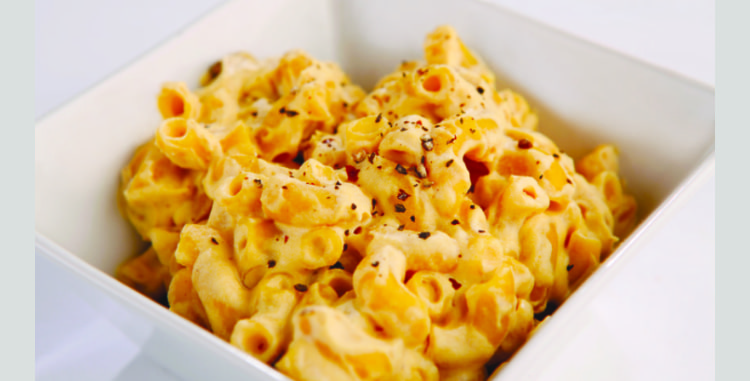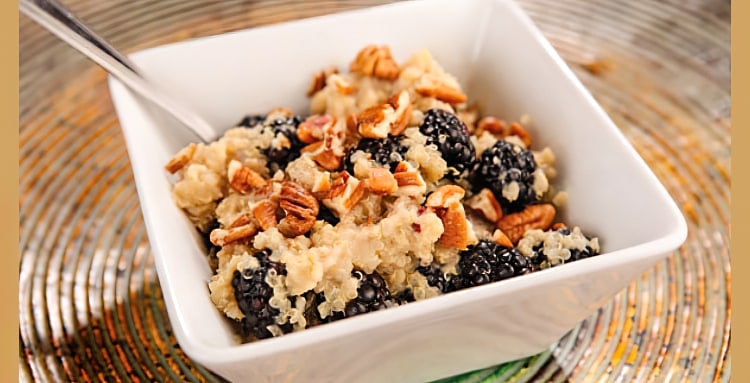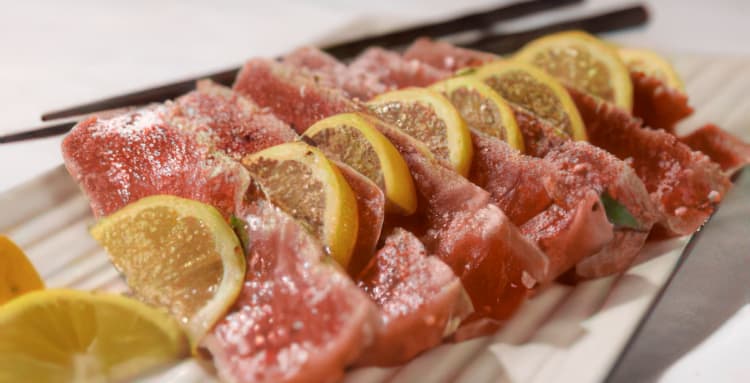What the frick are FODMAPS? Veronica Wheat, aka Chef V, explains what they are and how avoiding foods with high levels of them may greatly reduce Irritable Bowel Syndrome (IBS) symptoms. (For more general info on IBS click here.)
“Beans, beans they’re good for your heart … the more you eat the more you FART.”
Anybody with Irritable Bowel Syndrome can tell you that nursery rhyme is all too true.
For millions of people living with this gastrointestinal disorder, eating foods that are considered healthy—even by dieticians and other so-called experts—can cause severe bloating, abdominal discomfort, diarrhea, constipation, and yes, toots. Really stinky horrible toots.
While we’re still waiting for science to invent a magical IBS cure—its exact cause is unknown—what we do know is that certain foods like beans and lentils can trigger IBS symptoms.
Make no mistake about it, there is no 100% successful IBS intervention. However, one thing that really works for people with IBS is eating a low FODMAP diet. This makes it super important to eat most of your meals at home so that you’re in full control of the ingredients. And if you wanna jump ahead and check out my IBS-friendly recipes, I have a few to share with you here.

What Does FODMAP Stand For?
Warning: this acronym is a huge mouthful. I don’t blame you if you won’t be able to digest it, no pun intended. Ready? Here goes: Fermentable Oligosaccharides, Disaccharides, Monosaccharides, and Polyols. Like I said, what the frick are FODMAPS?
What Are FODMAPS?
OK, so let me explain what that means. The “O” “D” “M” and “P” in the acronym are types of sugars. I’m not talking about simple baking sugar. Rather, these are the carbohydrates (sugar is a carb) that are found in fruits, veggies, grains, lentils and other plant-based foods.
Some people can digest, say, a can of black beans just fine. But for people living with IBS, the specific type of carbs in the beans (oligosaccharides) don’t digest well in the small intestine. It’s as if the small intestine says, ‘no thanks, I’ll pass on the beans.’ Meanwhile, the beans move mostly undigested into the large intestine where they start fermenting.

Isn’t Fermentation Good?
Trendy fermented foods like sauerkraut (fermented cabbage) have a reputation of being super gut healthy. But here’s the thing about fermentation: it basically means the same as rotting. This is not to say that certain fermented foods do not contribute to our health. In fact, foods like sauerkraut are probably better for your gut microbiome than a conventional probiotic supplement.
However, the problem with certain fermented foods like sauerkraut is that they are higher in FODMAP sugars. And when the FODMAP sugars move along into the large intestine, it’s the fermentation that causes the black-bean-baby-belly and other symptoms.

Low FODMAP Diet Chart
Eating a low FODMAP diet, then, is one of the easiest ways to manage IBS symptoms. And that simply means that you eliminate as much as possible the foods that have the highest level of FODMAPS.
And to make it easy for you, here’s a list of good and bad FODMAP foods you can print out and take with you to the supermarket and restaurants.
If you really want to take a deep dive into the science behind FODMAPS, I highly encourage you to check out this resource from Australia’s Monash University. The researchers at Monash are IBS experts and pretty much pioneered the low FODMAP diet.
Another great resource, especially for people who are newly diagnosed with IBS is the IBS Group forum. You’ll never feel like you’re struggling alone with this condition that can make life a living hell at times…

How Long Do You Need To Eat Low FODMAP For?
The good news is that even if some of your favorite foods are high FODMAP, it doesn’t mean you have to give them up forever. The low FODMAP diet is basically an elimination phase. I recommend giving up all medium and high FODMAP foods for a minimum of four weeks.
After that first phase, you can reintroduce one medium or high FODMAP food at a time. Don’t start your reintroduction phase by eating, say, a bowl of pasta and dipping Italian bread into the sauce.
Personally, I think anybody with IBS should be gluten-free as much as possible but that’s for another topic. The important takeaway is that when you reintroduce medium/high FODMAP foods, do so one at a time.
For best results, eat that one medium/high FODMAP food for 2-3 days. If no IBS symptoms develop, then you can reintroduce your next favorite high FODMAP food that’s considered healthy like GARLIC and ONIONS.
As long as none of the reintroduced foods give you problems, you can continue to eat them. But for the best chances of IBS symptom prevention, you may want to stick to eating a low FODMAP diet for the foreseeable future.

Conclusion
IBS is a bitch. Imagine not knowing if symptoms are going to flare up when you go out to dinner with friends. This is why it’s so important to memorize the list of low FODMAP foods. Or like I said, print out a list or snap a pic with your phone.
There is so much that’s unknown about IBS and for that reason, I’ll leave you with this last piece of advice… If you have really good health insurance or can afford to pay out of pocket, work with a functional medicine doctor or naturopathic doctor, one who has tons of experience working with IBS patients. Do your research and get a referral from someone who has successfully learned to control their IBS.
In the meantime, pass on the beans.
Love, Chef V




















